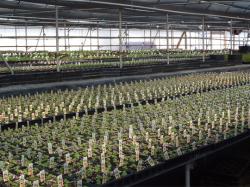Plant Businesses Big And Small Are Firing Up For The Growing Season
February 1, 2016 | 1 min to read

Setting out petunias in the flower beds and starting tomato and pepper plants in the vegetable garden may seem a long way off here in February, but in New Hampshire and Vermont greenhouse operations, the spring season already is well underway. Propane-fired heaters are roaring, seeds are being placed in growing media and tiny seedlings of some species already are emerging as growers prepare for the sales rush that will begin as soon as the peepers begin their music in the wetlands.
Producers of spring plant materials have spent months planning what they’ll be offering their customers come April and May, hoping to please buyers who want the tried-and-true varieties they’ve been happy with for years, as well as those who want the trendy new strains they’ve seen on TV gardening shows or pitched by the likes of Martha Stewart.
All of their efforts are against the backdrop afforded by big-box stores like Home Depot and Wal-Mart that peddle spring plants at cheap prices, often below the cost of production for a locally owned and operated greenhouse enterprise. As the spring plant industry has evolved in the last 25 years, with the mass-merchandisers seeking domination of the sector, the little guys have been battling back with the one tool the bigs can’t match: knowledge.
To read the rest of the story, please go to: Valley News
